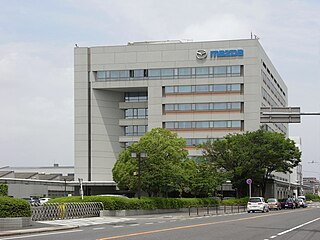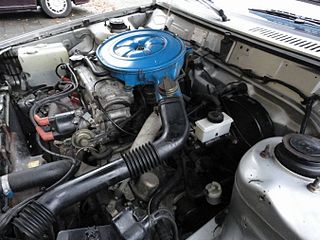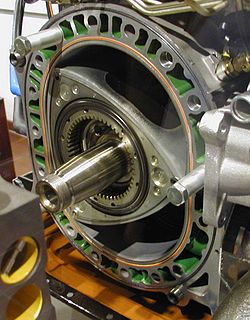This article does not cite any sources .(May 2007) (Learn how and when to remove this template message) |
This List of Mazda platforms describes following automobile platforms which have been used by Mazda since the 1980s.
This article does not cite any sources .(May 2007) (Learn how and when to remove this template message) |
This List of Mazda platforms describes following automobile platforms which have been used by Mazda since the 1980s.
The company's platforms form the fifth and sixth characters of the VIN on post-1981 vehicles. The first character is a letter representing the platform family, while the second is a sequential letter for the revision of the platform. For example, the Mazda N platform used by the Mazda Miata started at NA and was updated in 1998 to NB and in 2006 to NC. The 2016 and newer MX-5s are designated ND.
Mazda generally starts car platforms at the letter "A", but van and truck variants often get different names, usually starting at "V".
Note: The US-built Mazda6 and Tribute do not use the Mazda platform code in the VIN; in its place is an AutoAlliance code. Instead of the platform code letter, position four in the VIN specifies the vehicle's safety systems, and position five specifies the marque, due to being built in a multi-brand facility.
Prior to 1981, Mazda used a different VIN format and platform naming scheme. The platforms were given two characters, and the model a third, based on their names.
The following pre-1981 platforms are known:
The next digit of the VIN specified the engine:

Mazda Motor Corporation, commonly referred to as simply Mazda, is a Japanese multinational automaker based in Fuchū, Aki District, Hiroshima Prefecture, Japan.

The Mazda MX-3 is a four-seat coupé manufactured and marketed by Mazda, introduced at the Geneva Auto Show in March 1991 and marketed for model years 1992-1998.

The Mazda Cosmo is an automobile which was produced by Mazda from 1967 to 1995. Throughout its history, the Cosmo served as a "halo" vehicle for Mazda, with the first Cosmo successfully launching the Mazda Wankel engine. The final generation of Cosmo served as Mazda's flagship vehicle in Japan, being sold as the Eunos Cosmo through its luxury Eunos division in Japan.

The Mazda Luce is an executive car that was produced by Mazda in Japan from 1966 until 1991. It was widely exported as the Mazda 929 from 1973 to 1991 as Mazda's largest sedan. Later generations were installed with luxury items and interiors as the Luce became the flagship offering. The Luce was replaced by the Sentia in 1991 which was also exported under the 929 name. The name "luce" was taken from the Italian word for "light".

The F engine family from Mazda is a mid-sized inline-four piston engine with iron block, alloy head and belt-driven SOHC and DOHC configurations. Introduced in 1983 as the 1.6-litre F6, this engine was found in the Mazda B-Series truck and Mazda G platform models such as Mazda 626/Capella as well as many other models internationally including Mazda Bongo and Ford Freda clone, Mazda B-series based Ford Courier, Mazda 929 HC and the GD platform-based Ford Probe

The Mazda Wankel engines are a family of Wankel rotary combustion car engines produced by Mazda.
Eunos was a marque of Japanese automaker Mazda, marketed as its upscale, fun to drive line in its home market. The brand existed from 1989 to 1996, when sales operations were integrated into ɛ̃fini.

Autozam was a marque of Japanese automaker Mazda, specializing in small cars and Kei cars; many of which were rebadged Suzuki models.
The Mazda F platform is an automobile platform for rear-wheel drive sports cars. It was the basis for three generations of the Mazda RX-7.
The Mazda G platform is an automobile platform for midsize cars. It has been used by a number of vehicles from Mazda in Japan and abroad.
The Mazda H platform is an automobile platform for rear-wheel drive full-size cars. It has been used by a number of vehicles from Mazda in Japan and abroad.
The Mazda J platform is an automobile platform for rear-wheel drive full-size cars. It only existed for five years in the early 1990s, but was the basis for the famous Eunos Cosmo GT car.
The Mazda N platform is an automobile platform for FMR layout sports cars. It has been the basis for four generations of the Mazda MX-5, as well as the 2016 Fiat 124 Spider.

The Mazda Persona is a mid-sized, front-wheel drive, four-door hardtop sedan produced by Mazda in Japan from November 1988 to December 1991, and sold both within its main range and under its upscale Eunos brand, as the Eunos 300. It is a rebodied Capella/626 with more luxurious equipment. The Persona was Mazda's answer to the Toyota Carina ED, Nissan Presea, and Mitsubishi Emeraude — Japanese sedans that attempted to capture the pillarless hardtop look and proportion of large American sedans. Transposed onto a smaller Japanese sedan, this proportion often led to a small, low cabin in context of longer front and rear ends. It was replaced by the ɛ̃fini MS-8 in March 1992, after Persona stocks had run out. The car was only offered new in the domestic Japanese market.
Hiroshima Plant is an automobile manufacturing complex in Aki, Hiroshima, Japan, operated by Mazda Motor Corporation. The complex consists of two main elements, the head office in Aki District, and the main plant in nearby Ujina District. It was Mazda's only car-assembly plant in Japan until the Hofu Plant opened in 1982. Mazda's own museum is situated within the plant, showcasing some of Mazda's historic cars and their present and future models.

Mazda North American Operations (MNAO), which includes Mazda Motor of America, Inc., is Mazda Motor Corporation's North American arm, and constitutes the largest component of that company outside Japan. The company has its headquarters in Irvine, California and is headed by Masahiro Moro.

The Mazda Grand Familia is an automobile which was produced by Mazda in Japan from 1971 to 1978. It was sold as the Mazda 808 in some export markets including Asia, Australia, and New Zealand, and as the Mazda 818 in many others. The body style configurations offered were a two-door coupé, a four-door sedan, and a five-door station wagon. The Grand Familia offered only inline four cylinder engines. The largely identical rotary-powered versions were marketed as the Mazda Savanna in Japan, with export markets taking this model as the Mazda RX-3.